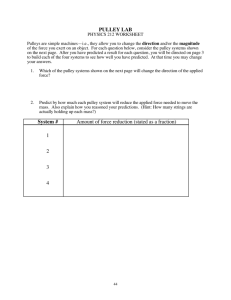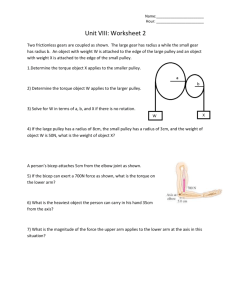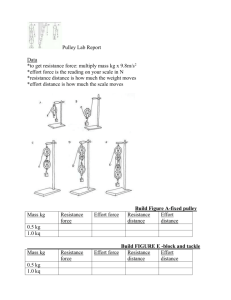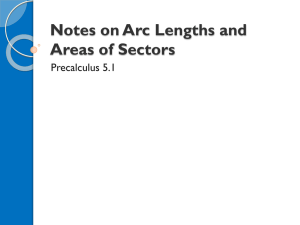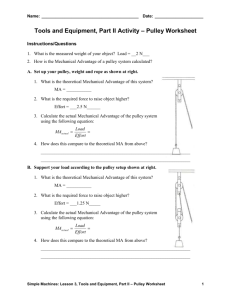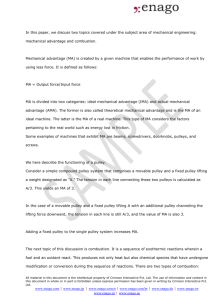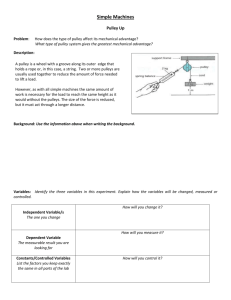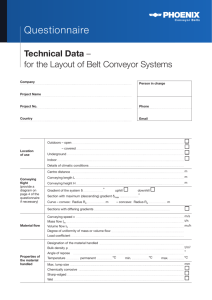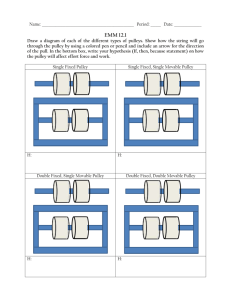cranks
advertisement
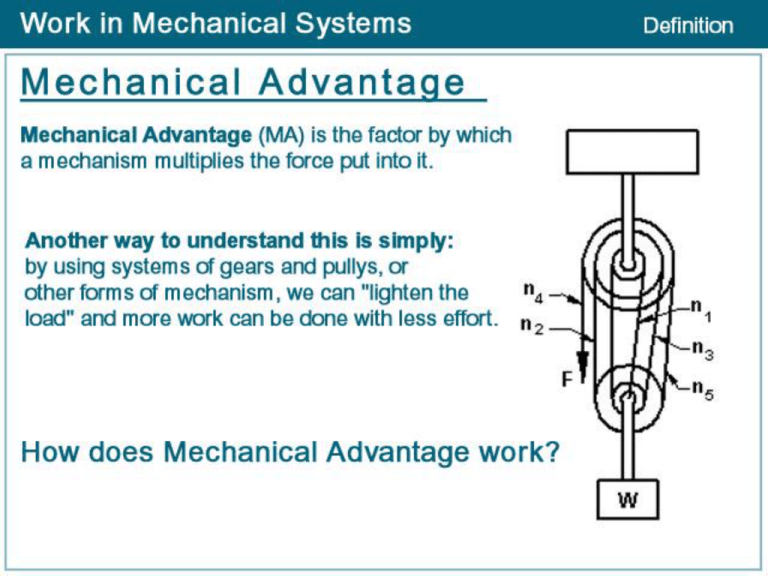
Bevel/Pinion Gears Spur Gear Worm Gear Planetary Gear Let us assume that a driver pulley is attached to a motor. When the motor is switched on the driver pulley revolves at 20 rpm. The diameter of the driver pulley wheel is 200mm and the driven pulley wheel is 400mm. This means for every single revolution of the larger driven pulley wheel, the smaller driver pulley wheel rotates twice. This is due to velocity ratio. The ratio can be worked out mathematically in different ways. The two most likely methods are shown below The pulley to the left is suspended and as a consequence the mechanical advantage is increased. This happens because the rope on the left and right of the pulley are both lifting the LOAD, they each lift half its weight. The load is split into 2. A pulley system with the effort applied from above is very difficult to use. The most comfortable way to use a single moving pulley is combine it with a fixed pulley, seen below. This allows the effort to be applied downwards. Please note, as one of the pulleys is a fixed pulley the mechanical advantage and velocity ratio is still calculated as if only the moving pulley exists. The velocity ratio and the mechanical advantage remains 2. CRANKS CRANKS 360° = 2лr Torque = Force · Radius (t = f · r) 180° = лr (Theta) Θ = (revolutions · (2Πr / 1rev) 90° = ½ лr Work = Torque x Theta (w = t x Θ) 45° = ¼ лr

